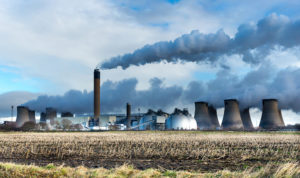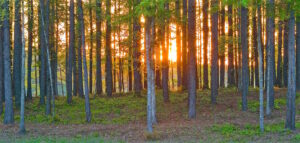A fierce academic row over wood burning?
By Sini Eräjää, EU bioenergy policy officer at BirdLife Europe & Central Asia.
Last February, the high profile independent British think thank Chatham House published a report on ‘The Impacts of the Demand for Woody Biomass for Power and Heat’ making a thorough assessment of the environmental and climate impacts of growing wood use for energy. One of the key recommendations of the report concludes that only the use of waste and residue wood should be supported as renewable energy if emission reductions are to be ensured.
Few days later the BBC wrote that ‘Burning wood for energy ignites fierce academic row’ referring to the report. What is the fuzz about?
Debates are obviously a fundamental part of science and research but it seems that the Chatham House report hit some particularly sensitive spots. The report prompted a response by “125 academic signatories from both sides of the Atlantic” that collaborate under the International Energy Agency’s Bioenergy Technology Collaboration Programme (IEA Bioenergy) stating that the whole report is misleading. Must have been a powerful report if it got over hundred academics moving?
The IEA Bioenergy is a group established to “improve international co-operation and information exchange between national bioenergy research, development and demonstration programmes” and is funded by national governments whose representatives make up the executive committee of the group. The European Commission is also represented. The relation between IEA Bioenergy and the response criticising Chatham House is however not that clear as actually only a couple of the representatives of the executive committee supported it.
It seems that the letter has, however, been very successful in representing the views and concerns of the bioenergy industry whose business case depends on the idea of sustainability of bioenergy, as well as of forest produces, with more than 30 signatories from these groups. The academics supporting the letter are overwhelmingly from the fields of bioenergy and forestry rather than energy, climate or environment.
In any case, all of them sound very upset by the report – but why is that? Their response points to various arguments the signatories feel have not been taken into account by the Chatham House report. A quick look at the report however shows that many of the issues actually have been discussed quite explicitly – perhaps just not in a way the signatories would have liked to.
For example the response identifies the following ‘flaw’ in the Chatham House report:
“Inaccurate interpretation of impact of harvest on forest carbon stock: The large fluctuations observed at the stand level, from net carbon sequestration to net carbon emissions at harvest, are not observed at the landscape level due to staggered harvest, which delivers a constant supply of timber while maintaining or increasing wood volume in the forest. Impacts of bioenergy on forest carbon stock should be assessed as impact on long-term average forest carbon stocks at a landscape scale.”
As a matter of fact the report explicitly discussed this argument, even referring to earlier similar statements made by publications of the IEA Bioenergy. A letter by the Chatham House with a detailed response by the author to the IEA Bioenergy critique lays this out in detail. For example:
“This argument, which is addressed on pages 24–27 of the paper, is unsound, because one cannot assume that these other parts of the forest would have stopped growing in the absence of extraction of wood for bioenergy from one or more stands. The fact that ‘large fluctuations [in carbon stock] observed at the stand level … are not observed at the landscape level’ does not, as the letter and supporting document appear to imply, mean that those impacts have somehow disappeared. Unless the harvest of trees causes trees elsewhere to grow faster, the net effect of the harvest is to reduce stored carbon in the forest, and also to lose future carbon sequestration from the harvested trees.”
These answers were further supported by a letter from three scientist also prominent in the field of bioenergy and climate. To continue on the same topic of debate:
“The IEA has identified as carbon-neutral biomass any “surplus forest growth,” meaning any amount of wood up to the level of annual forest growth. The well-recognized problem with this argument is that many of the world’s forests, and the world’s forests overall, are gaining wood and carbon. This is known as the forest carbon sink and it plays a critical role in holding down climate change. It is a double-counting error to count this wood as providing carbon-free fuel while assuming that it simultaneously continues to stand in the forest and contribute to the forest carbon sink.”
All of this is, understandably enough, interpreted by the media as a fierce academic row!
At the end of the day however, the strongest disagreement of the academic signatories of the response and the industries supporting them seems to be over the policy recommendations of the report and they urge the Chatham House to reconsider them. This actually summarises the current state of the debate on bioenergy quite well. Even if scientific understanding keeps on evolving, the bigger disagreement is over how the current scientific understanding (which is plentiful already) should be interpreted and what kind of conclusions should be drawn from it. As the Research Director of Chatham House nicely summarises in his response:
“They [differing assessments] do not, however, justify the unwarranted request that the paper’s recommendations be revised. This may be consistent with IEA Bioenergy’s objective of accelerating bioenergy deployment, but it is extraordinary for an intergovernmental platform to demand the revision of policy recommendations with which it does not agree.”
This raises the questions whether rather than ‘a fierce academic row’ we’re witnessing a cry-out from a sector and industry that sees its full legitimacy being questioned and withering away?
Banner photo: © Shutterstock





